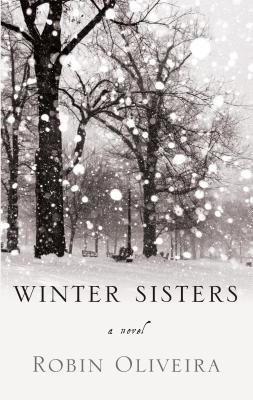
Winter Sisters
by Robin Oliveira
Thorndike Press, 2018
Reviewed by Barbara Free and Jenna Wiley
In this story, a terrible snowstorm occurs in March in Albany, during which many people die of exposure or injury, and even of starvation in the aftermath. Such a storm actually occurred in 1888, killing 400 people, but the author set the story in an earlier time frame to tie it in with the movement to change age-of-consent statutes, which were eventually changed (for girls only) to raise the age of consent to sixteen, with no mention of boys at all.
In the novel, two young sisters are at school when the blizzard comes, and both their father and mother are killed, in separate incidents, trying to get to each other. The children have no knowledge of this, of course, and they are stranded at their school, along with all the other children, their teacher, and the principal. Several days later, when the storm stops, all the rest of the children are picked up by family or find their way home, but no one comes for the sisters, Emma and Claire.
Having no clue that their parents are dead, the teacher reluctantly lets them leave by themselves, because there is no more food at the school, and she must also find her own way home. They are ultimately picked up by a mysterious man in a red sleigh, who promises to take them home, but instead takes them to a house where they are held captive.
After extended family members discover the parents’ bodies, they try to find the girls, to no avail. The police tell them to assume the girls are dead, perhaps drowned. One particular policeman seems adamant that it’s a waste of time to search. As the story progresses, it becomes more and more complicated and the connections between all the people gradually become apparent. The book also highlights the prejudice against women physicians, and the issues of classism and wealth at that time.
This book is so compelling we don’t want to give away the details of this mystery, but the reader will be surprised and amazed, right up to the end. It is all rendered tastefully, albeit somewhat graphically in places, especially given the setting of 1879, but anyone from twelve years old on up will find it interesting, if not particularly joyful reading.
Jenna says, don’t read it at night, but Barbara finally couldn’t put it down the last night! This book would be a good start for a student to do further research on the social and legal issues brought up in this story. Just one hint: the two young sisters do survive and are raised by extended family, some of whom are biological relatives and some not. It is a testament to the idea that family is not limited to genetic relatives.
Excerpted from the February 2020 edition of the Operation Identity Newsletter
© 2020 Operation Identity